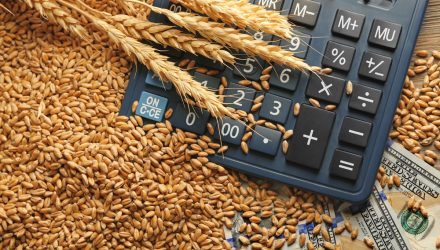Grains prices and related exchange traded funds are experiencing wild swings as a tight market exposes the agricultural commodity to sudden changes in the outlook with rain now the main focus.
Among the worst-performing non-leveraged ETFs of Tuesday, the Teucrium Corn Fund (CORN) declined 5.7%, Teucrium Wheat Fund (NYSEArca: WEAT) fell 4.3%, and Teucrium Soybean Fund (NYSEArca: SOYB) dropped 6.3%.
Grain futures trading on the Chicago Board of Trade have plummeted Tuesday, with the most-active corn futures down by their limit of 40 cents per bushel, erasing gains from last week when futures jumped after the U.S. Department of Agriculture revealed two key updates on grains supplies and demand, the Wall Street Journal reports.
As the country heads toward the hottest days of the summer, the forecasted above-average temperatures and dry conditions could further decimate crop production in areas already dealing with drought. The volatility in agricultural futures is now being driven by uncertainty that growing regions will receive much-needed rain.
“Now is when rains will become more critical though as developing crops require more moisture as they progress,” Karl Setzer, a commodity risk adviser with AgriVisor, said in a recent note.
The summer months an important period for determining the health of crops as dry weather during this period can stunt crop yields, whereas large-scale rains can provide them with the moisture they need for the longer-term growing season.
“Fundamentals are very tight; the margin of error is very tight,” Don Roose, head of West Des Moines, Iowa-based trading firm U.S. Commodities Inc, told the WSJ. “We’re almost getting to the point where we need back-to-back big crops.”
Furthermore, the grains market is also seeing swings due to grain exports to China, which have taken a step on concerns over the future outlook for Chinese demand. However, the USDA’s Foreign Agricultural Service (FAS) recently stated that China imported $7.7 billion of U.S. soybeans in the first quarter of 2021, the second-highest total on record for the quarter. The report also predicted that China will remain a strong importer of U.S. grains due to higher domestic prices there.
“Export volumes are up substantially due to the rebound of trade with China owing to the removal of retaliatory tariffs, the rebuilding of the swine herd from African swine fever (ASF), and a delayed South American harvest extending the U.S. selling window,” according to the FAS.
For more information on the commodities market, visit our commodity ETFs category.
